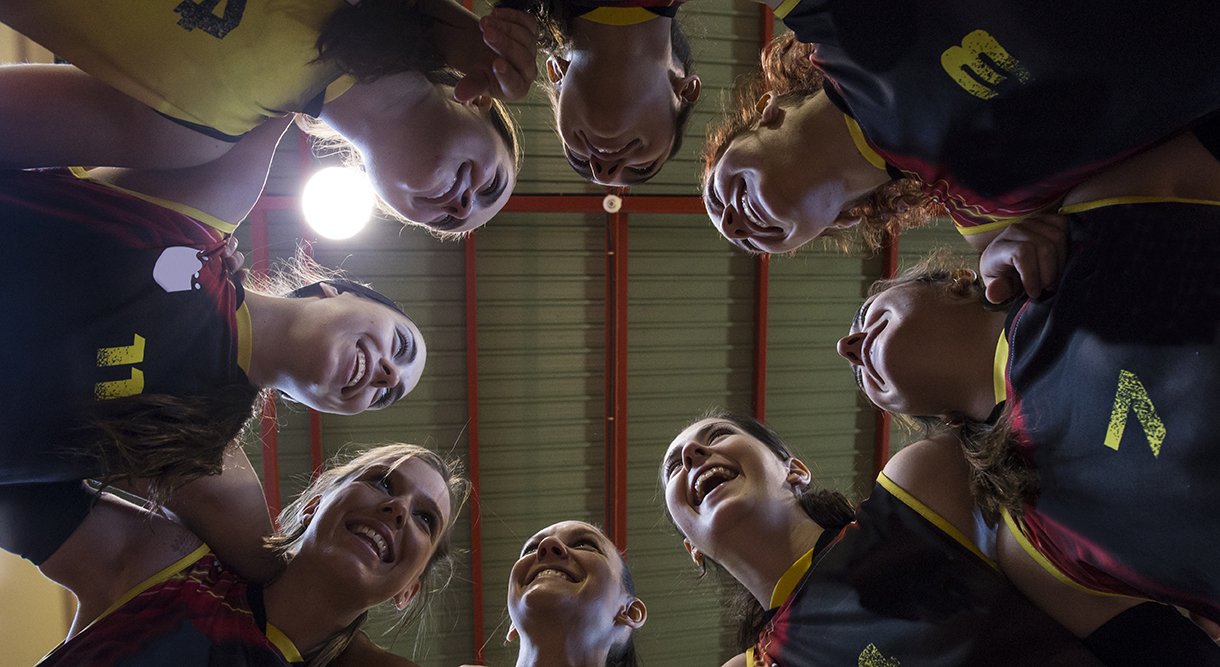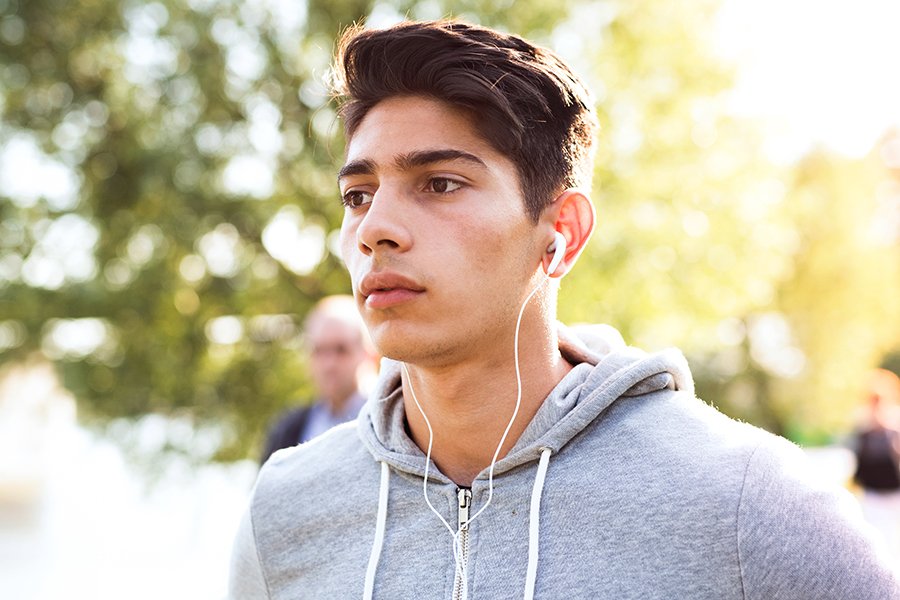
For young athletes, maintaining a positive body image is difficult at the best of times, but when a competitive team atmosphere is added into the mix, that positivity can become even harder.
No matter how much you talk about the importance of pulling together as a team, your athletes are going to naturally compete with each other, as well as with rival teams, explains Melissa Streno, a clinical psychologist who specializes in athletic performance and its intersection with disordered eating and body image issues. This isn’t unhealthy, but it can go too far. “Teammates start mimicking each other’s behavior,” says Streno. “So, once you notice a problem with one athlete, know that there’s likely going to be a trickle-down effect.”
As a coach, you may not notice the subtle ways your team is creating an unhealthy environment when it comes to body image, eating patterns, and other habits. Below, Streno explains some of the warning signs to watch for as your athletes try to find success in competitive sports and how you can help foster a body positive image culture on your team.
Warning Signs
Changes in performance
“First, I would keep an eye out for a big shift in performance, where physically or psychologically, something seems off,” says Streno. “Physically, I think one of the easiest things to look for is a change in weight or body shape, or a major change in fitness.”
Keep in mind that not all physical consequences of disordered eating or eating disorders are visible to the eye.
“Psychologically, we might notice a difference in their mood, more conflicts with teammates and coaches, and more isolative tendencies or less desire to be part of the team as they try to hide concerning behaviors.”
Behavior around meals
Streno recommends watching out for kids avoiding meals or changing their behaviors around mealtime. Are some kids making constant excuses to skip meals?
Overtraining
Body image isn’t just about changes in caloric consumption, Streno warns. “Pay attention for when athletes start to train beyond the prescribed amount or try to push through injury.”
Need for validation
When an athlete who hasn’t previously come to you for constant feedback or praise is reaching out for validation, that can be a warning sign, say Streno. “Coaches might see an athlete shifting how much they communicate and starting to ask, ‘Am I doing this right? Am I doing enough?’ when they haven’t done so in the past.”
Need for control
Often, disordered eating and overtraining are linked to an athlete’s need for control. Between parents, school, and sports, their sphere of control is limited, and their body is one of the few things that they can ‘control.’ “Very few athletes dealing with body image issues are merely concerned about performance,” says Streno. “It’s often about a need to control things.”
Bullying others
“Food shaming, or critiquing what other people are doing, is common,” says Streno. “And oftentimes, it’s to make the person who’s doing the critiquing feel better when they’re dealing with a lot of self-consciousness or low self-esteem.” Bullying obviously cannot be tolerated on a team, but remember that the food-shaming student is likely suffering and needs help.
Fixation on food trends
“If you constantly hear athletes comparing what they’re eating, talking about new diets, or gossiping about body image and comparing body types, that’s a sign of a team-wide problem,” says Streno. “Try to find the source of these messages.” Research has shown that information provided by peers is more important to young athletes than what they see in the media or read about.

How to Help Foster Positive Body Image
Your words matter
“Athletes form an idea around even small comments,” says Streno. It may be unintentional, but your words can have dire consequences, so be extremely careful how you speak about eating habits, body type or weight, or any kind of physique-based advice.
Focus on strength
Rather than focusing on a specific type of physique, focus on strength.
“Ask athletes what makes them feel strong, how can they maintain that level of strength, and what gives them energy,” Streno says. Create a team ethos that focuses on body positivity and what your athletes can do, rather than on flaws or places to improve. In addition to sharing that message yourself, seek out good role models in the community. Research has shown that younger girls are heavily influenced by older peers when it comes to body image.
Bring in an expert
If you notice that some of your team members are struggling with body image issues or implementing unhealthy eating habits, you can bring in a sport psychologist or another specialist to address the team, says Streno. This whole-team approach avoids singling out specific individuals, which can make the athletes who are struggling feel less self-conscious. But of course, if you notice an athlete is having extreme food and/or body-related issues, it’s important to get that athlete help immediately, rather than waiting.
Find positive outside influences
“I’m always encouraging athletes to filter out their social media, including the people that they follow,” says Streno. Coaches can help steer athletes to positive body image messages and accounts that promote a healthy approach to sport performance.
Takeaway
Body image is often influenced by surrounding people and cultures, which means that a competitive team environment can make it hard to maintain a positive body image. By watching out for these warning signs and fostering positive habits, coaches can help develop positive body image on their teams.
